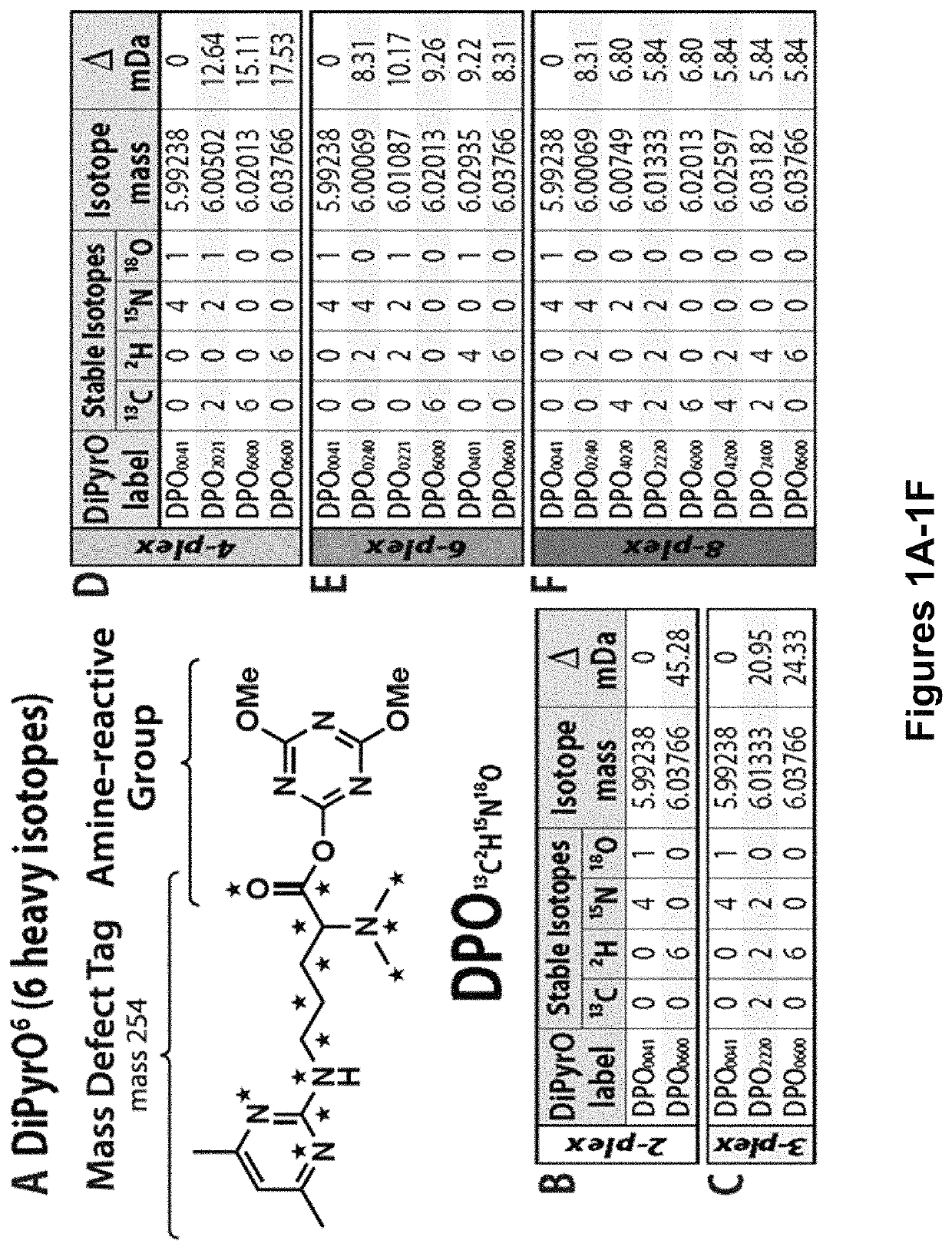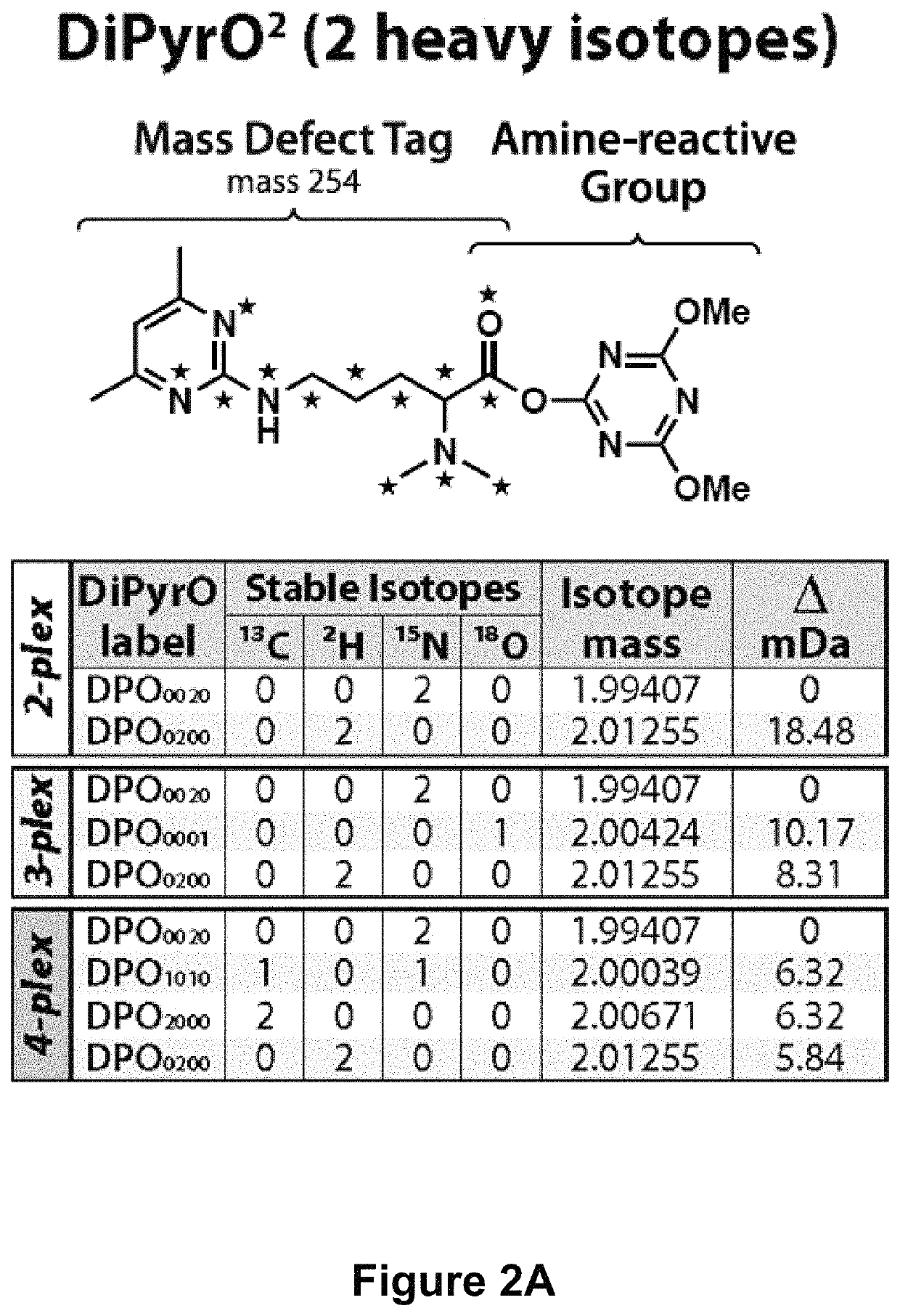Mass defect-based multiplex dimethyl pyrimidinyl ornithine (DiPyrO) tags for high-throughput quantitative proteomics and peptidomics
a technology of pyrimidinyl ornithine and which is applied in the field of mass defect-based multiplex dimethyl pyrimidinyl ornithine (dipyro) tags for high-throughput quantitative proteomics and peptidomics, can solve the problems of reducing instrument efficiency, fewer number of peptide and protein identifications, and increasing mass spectral complexity
- Summary
- Abstract
- Description
- Claims
- Application Information
AI Technical Summary
Benefits of technology
Problems solved by technology
Method used
Image
Examples
examples
[0148]Chemicals.
[0149]All isotopic reagents used for the synthesis of labels were purchased from Isotec (Miamisburg, Ohio). Mass spec grade trypsin / Lys C mix, yeast protein extract, dithiothreitol (DTT) were purchased from Promega (Madison, Wis.). Urea, ACS grade methanol (MeOH), ACS grade dichloromethane (DCM), ACS grade acetonitrile (ACN), Optima UPLC grade ACN, Optima UPLC grade water, and Optima LC / MS grade formic acid were purchased from Fisher Scientific (Pittsburgh, Pa.). Palladium on activated charcoal (Pd / C), hydrogen chloride gas (HCl), deuterium gas (D2), L-arginine HCl, formaldehyde (CH2O), Tris-HCl, triethylamine (TEA), acetylacetone, iodoacetamide (IAA), triethylammonium bicarbonate (TEAB), N,N-dimethylformamide (DMF), 4-(4, 6-dimethoxy-1, 3, 5-triazin-2-yl)-4-methylmorpholinium tetrafluoroborate (DMTMM), N-methylmorpholine (NMM), trifluoroacetic acid (TFA), and dimethyl-sulfoxide (DMSO) were purchased from Sigma-Aldrich (St. Louis, Mo.). Hydroxylamine solution was pur...
PUM
| Property | Measurement | Unit |
|---|---|---|
| mass | aaaaa | aaaaa |
| mass difference | aaaaa | aaaaa |
| mass | aaaaa | aaaaa |
Abstract
Description
Claims
Application Information
 Login to View More
Login to View More - R&D
- Intellectual Property
- Life Sciences
- Materials
- Tech Scout
- Unparalleled Data Quality
- Higher Quality Content
- 60% Fewer Hallucinations
Browse by: Latest US Patents, China's latest patents, Technical Efficacy Thesaurus, Application Domain, Technology Topic, Popular Technical Reports.
© 2025 PatSnap. All rights reserved.Legal|Privacy policy|Modern Slavery Act Transparency Statement|Sitemap|About US| Contact US: help@patsnap.com



